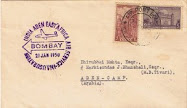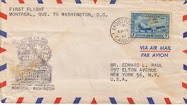LZ2 over Rothenberg
Despite its potential, the shareholders of Gesellschaft zur Förderung der Luftschiffahrt, the company formed by Count von Zeppelin, declined to invest more money in the development of airships after the breaking up of LZ1. The Count wished to continue experimenting so with the support of aviation enthusiasts his idea got a second (and third) chance to be developed into a reasonably reliable technology.
The Zeppelin LZ2 was first flown in 1906. It was the true "prototype" of the Zeppelin airship. The major mistakes made by Kübler in the design of the LZ1 were taken into account while designing the LZ 2. . The designer, Ludwig Dürr, who was to head the design of all subsequent Zeppelins, used triangular-section girders instead of Kübler's flat girders, and elevators instead of a lead weight to control pitch. The final addition was a triangular keel which became a major structural element, as well as a walkway between the gondolas, allowing access to much of the ship.
LZ3 over Wurzburg
The life of the LZ2 was brief as only two flights were made. Its immediate successor, the LZ3, first flew on 9 October 1906 and it was purchased by the German Army in 1908 and operated until 1913. The LZ3 made many flights and carried a number of influential passengers, including the German Crown Prince beforeits sale to the Army,. The military administration put the LZ3 to use as the renamed Z1. Starting in 1909, Zeppelins also were used in civilian aviation. The German Aviation Association (Deutsche Luftschiffahrtsgesellschaft or DELAG) transported 37,250 people on over 1600 flights uptol 1914 without an incident. Within a few short years the zeppelin revolution began creating the age of air transportation.
LZ 4 over hangar
The army was also willing to buy LZ 4, but requested a demonstration of her ability to make a 24-hour trip. While attempting to fulfill this requirement, the crew of LZ 4 had to make an intermediate landing in Echterdingen near Stuttgart. During the stop, a storm tore the airship away from its anchorage in the afternoon of 5 August 1908. She crashed into a tree, caught fire, and quickly burnt out. This accident would have certainly knocked out the Zeppelin project economically had not one of the spectators in the crowd spontaneously initiated a collection of donations, yielding an impressive total of 6,096,555 Mark. This enabled the Count to found the Luftschiffbau Zeppelin GmbH (Airship Construction Zeppelin Ltd.) and a Zeppelin Foundation.
A total of 21 Zeppelin airships (LZ 5 to LZ 25) were manufactured before World War I. In 1909 LZ 6 became the first Zeppelin used for commercial passenger transport. The airships were given names in addition to their production numbers.
The army was also willing to buy LZ 4, but requested a demonstration of her ability to make a 24-hour trip. While attempting to fulfill this requirement, the crew of LZ 4 had to make an intermediate landing in Echterdingen near Stuttgart. During the stop, a storm tore the airship away from its anchorage in the afternoon of 5 August 1908. She crashed into a tree, caught fire, and quickly burnt out. This accident would have certainly knocked out the Zeppelin project economically had not one of the spectators in the crowd spontaneously initiated a collection of donations, yielding an impressive total of 6,096,555 Mark. This enabled the Count to found the Luftschiffbau Zeppelin GmbH (Airship Construction Zeppelin Ltd.) and a Zeppelin Foundation.
A total of 21 Zeppelin airships (LZ 5 to LZ 25) were manufactured before World War I. In 1909 LZ 6 became the first Zeppelin used for commercial passenger transport. The airships were given names in addition to their production numbers.
LZ 7 - Deutschland
LZ 7 Deutschland made its maiden voyage on 19 June 1910. On 28 June it began a pleasure trip to make Zeppelins more popular. Among those aboard were 19 journalists, two of whom were reporters of well known British newspapers. LZ 7 crashed in bad weather at Mount Limberg near Bad Iburg in Lower Saxony, its hull getting stuck in trees. The crew then let down a ladder to allow all the passengers to leave the ship. One crew member was slightly injured on leaving the craft.













No comments:
Post a Comment